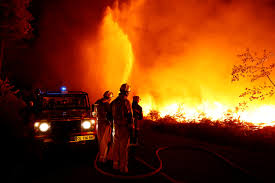
NSE bomb cyclone chaos
Bomb Cyclone Wreaks Havoc Across New South Wales Communities Grapple with Floods, Winds, and Destruction
In a devastating turn of weather events, New South Wales (NSE), Australia, has been gripped by a ferocious bomb cyclone that has caused widespread chaos across urban and rural areas alike. The phenomenon, characterized by a rapid drop in atmospheric pressure and an explosive intensification of storm systems, unleashed torrential rain, gale force winds, coastal erosion, and flash flooding throughout the state. From Sydney’s metropolitan neighborhoods to remote agricultural communities, the storm has upended lives, disrupted infrastructure, and tested the resilience of emergency services. As the skies begin to clear, authorities and residents are taking stock of the damage and bracing for the long recovery ahead.
The meteorological event began forming off the southeast coast of Australia earlier this week, but intensified rapidly, with atmospheric pressure plummeting by more than 24 millibars in under 24 hours a defining trait of a bomb cyclone. Weather agencies had issued early warnings, but the sheer magnitude of the storm took even seasoned meteorologists by surprise. By the time the system made landfall, it brought with it sustained winds of over 100 kilometers per hour, massive waves exceeding 7 meters along the coast, and rainfall totals of 200 to 300 millimeters in less than 48 hours in some regions. These conditions combined to produce one of the most violent storms to hit the region in over a decade.
Sydney, Australia’s most populous city, bore the brunt of the cyclone's wrath. Low lying suburbs experienced severe flash flooding, with cars submerged, homes inundated, and hundreds of residents evacuated overnight. Emergency crews worked around the clock to rescue stranded individuals from rooftops and trapped vehicles. Public transportation ground to a halt, as rail lines were washed out and buses rerouted due to blocked roads. Thousands of households lost power, with utility companies struggling to restore electricity amid ongoing hazardous conditions. Schools were shut down in affected zones, and local councils opened evacuation centers to shelter displaced families.
Further inland, regional towns across the Hunter Valley, Central Tablelands, and Illawarra suffered catastrophic losses. In agricultural regions, crops were destroyed and livestock lost as rivers burst their banks, turning fields into temporary lakes. Farmers, already struggling with recent drought and global supply chain issues, now face the daunting prospect of starting over. Small town infrastructure, often ill equipped to handle such intense weather, crumbled under the pressure. Bridges collapsed, access roads washed away, and communication lines fell silent. The cumulative impact of the storm has left dozens of communities isolated and reliant on air or boat deliveries of essentials like food, water, and medicine.
The storm’s maritime impacts were no less severe. Along the coast, especially around Wollongong and Newcastle, massive waves pounded beaches, sweeping away boardwalks and coastal defenses. Seaside properties were damaged or destroyed as cliff faces eroded and ocean tides surged inland. Several commercial vessels were forced to reroute or anchor offshore to avoid the storm's fury, while ferry services in and out of Sydney Harbour were suspended. Marine rescue operations were launched for stranded recreational boats and fishing vessels caught off guard. Coastal residents have described the scene as “apocalyptic,” with debris strewn beaches and shattered seawalls.
In the face of the disaster, emergency services and volunteer organizations mounted an enormous response. The NSE State Emergency Service (SES) received over 9,000 calls for help within the first 72 hours, deploying boats, helicopters, and high clearance vehicles to the hardest hit zones. Fire and Rescue NSE, the Rural Fire Service, and the Australian Defence Force were mobilized to support rescue, relief, and logistical efforts. Despite the rapid mobilization, some areas had to wait hours or even days for assistance due to impassable roads and continued storm activity. Volunteers and community groups played a critical role in filling the gap, delivering supplies, organizing shelter, and aiding cleanup.
Government officials have declared several local government areas (LGAs) as disaster zones, unlocking emergency funding and federal assistance. Premier of New South Wales, in an emergency press briefing, acknowledged the unprecedented nature of the cyclone and vowed that rebuilding would be swift and comprehensive. Financial aid packages are being prepared for homeowners, small businesses, and farmers who have suffered losses. Additionally, mental health services are being ramped up to support affected individuals, many of whom are coping with the trauma of evacuation, property loss, and the uncertainty of starting over. The government has also pledged to review infrastructure resilience strategies in light of increasingly extreme weather patterns.
Climate scientists and environmental experts have weighed in on the bomb cyclone, noting that while such events are not new, their frequency and intensity are increasing due to climate change. Warmer ocean temperatures, higher atmospheric moisture, and shifting wind patterns are believed to be contributing factors to these supercharged storms. The NSE bomb cyclone is part of a broader pattern of extreme weather events including bushfires, heatwaves, and flooding that Australia has faced over the past several years. Experts are urging policymakers to integrate climate adaptation strategies into urban planning, disaster response frameworks, and agricultural policy to mitigate future risks.
In conclusion, the bomb cyclone that struck New South Wales has left a deep and lasting impact on the region physically, economically, and emotionally. While the skies may be clearing, the recovery will be long and complex. The storm has highlighted the strengths of Australian resilience and emergency coordination, but it has also exposed the vulnerabilities of infrastructure and the pressing need for climate conscious planning. As communities begin the painstaking process of rebuilding homes, restoring services, and healing from the trauma, the lessons learned from this disaster will likely shape how NSE and the nation prepare for future climate challenges.










